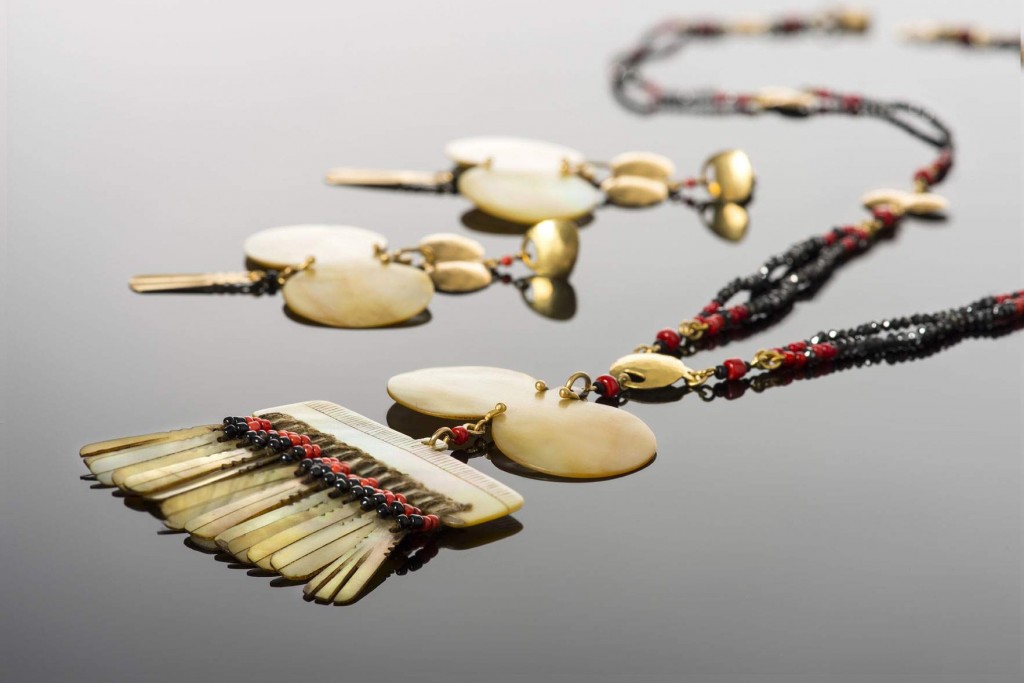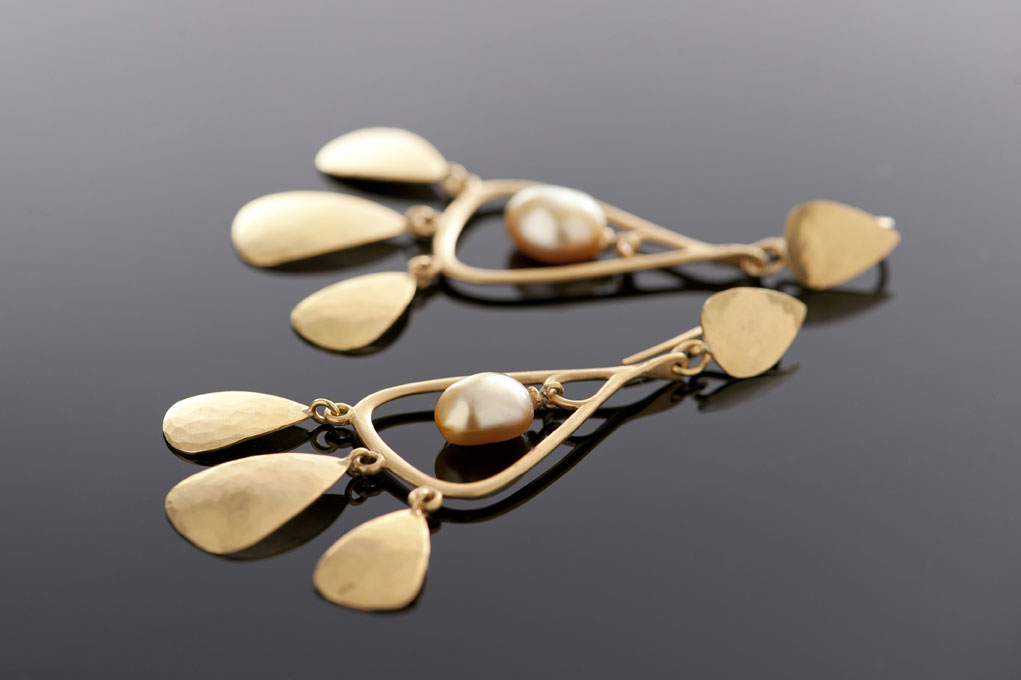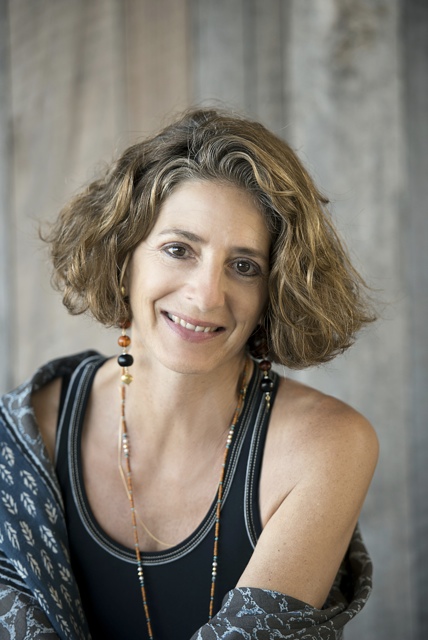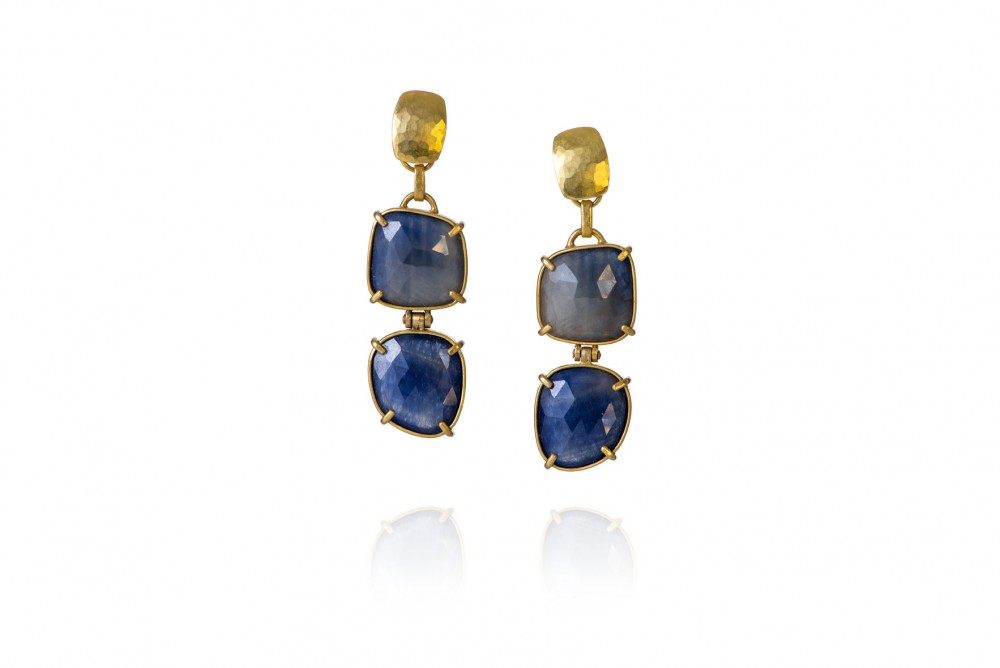The post The landscape of jewellery appeared first on .
]]>It’s obvious, from the moment you begin the drive from the road down towards Lisa Hochhauser’s house, and towards her studio that someone in the family loves gardens. There is a symmetry and grace to the layout and design of everything around me that is quite breath-taking.
So when I arrive at Hochhauser’s studio, where she creates her Lisa Black Jewellery and we start to talk, it comes as no surprise to discover that she is the secret behind the garden.
“I originally trained as a landscape architect,” she says. “When we lived in Sydney I taught at Sydney Uni as a design tutor and worked for numerous big firms over seven or eight years.”
The ‘we’ she refers to is her husband, ex-Sotheby’s director Robert Bleakley, and their three children. They made the move from Sydney to Byron 14 years ago, and it was clear to Hochhauser that she would need a career change.
“I knew from the time we’d been coming up here that landscape was not often a high priority on people’s lists,” she says. “It was either something they didn’t see the value in, or they’d do it themselves. I think it’s less like that now, but when we decided to move I knew I’d have to do something.”
As it turns out that ‘something’ turned out to be an almost inevitable career path. “I didn’t realise this for many years,” she says, “but in some ways my family influences must have been at play in my decision. I’d always loved jewellery and that goes back to my grandmother. She had a small dairy restaurant on the Lower East Side in New York, and that’s where my mother grew up too. When the Depression hit they had the restaurant, so unlike many people they had food. People with no money would go into this restaurant and they would pay for food with their jewellery. I have this memory of playing with all these fabulous pieces and precious stones – and lots of things that were fashionable for that era – marcasite and rhinestones for instance – and I think as far back as that is when I began to develop a love of finding one thing to go with another thing.”

Kalinga butterfly earring with old black sapphire and red glass beads and hand hammered 22kt gold
Kalinga fringe and black diamond necklace
In fact, it’s that notion of pulling something together into a cohesive whole that creates a similarity between landscape and jewellery, despite the obvious difference in the size of the projects, says Hochhauser. “If you think about it there’s many architectural aspects to jewellery-making,” she says. “You need to be able to judge the weight and proportions of what you’re making, how what you’re working with balances. It involves drawing, texture and colour, and those are all things I enjoy.”
Hochhauser’s decision was originally based more on the notion that she would need to have some kind of creative outlet, but it quickly became a profession for her. She carefully searched for people who were like-minded in their quest for perfection, including a Dutch silversmith. “Jann is a fine master craftsman,” she says. “I really wanted to find someone who could do gold work with the same aesthetic sensibility as me, and when I found him the jewellery began to take form.”
Surprisingly perhaps the combination of landscape architect and jeweller in one package is not as unusual as you might think. The legendary landscape architect, author and critic of postmodernism, Charles Jencks has designed jewellery, including a pendant sold to raise funds for Maggie’s, a charity named after his wife who died of cancer. Tasmanian landscape architect Kevin Mullins has moved into jewellery design and Brisbane-based jewellery designer, Kate Phillips is also a landscape artist. Says Hochhauser: “Artist Anish Kapoor has created some beautiful jewellery – Rene Magritte, Dali, the architects Michael Graves and Zaha Hadida – the list goes on…”
These days most of Hochhauser’s time is spent involved in her jewellery design, although she admits to still missing the more major landscaping projects from time to time. However there is one major advantage to being a jeweller. “If you’re a landscape architect finally you’re bound by the client,” she says. “If the client wants an English cottage garden for a modern Australian house perched on a cliff then in the end no matter what you say, you have to give them what they want. But creating my jewellery I have the final say!”

Classic Chandelier with gold droplets: Golden Australian South sea keshi pearl in teardrop frame with hammered 22kt gold
Unlike a lot of jewellers Hochhauser doesn’t work in with the fashion industry, or in seasons. “I’m more like an artist,” she says. “The inspiration comes to me as an artist’s work comes, and it doesn’t necessarily change every season. I have a hoard of old tribal bits and pieces, and I go to jewellery shows around the world, and what tends to happen is that an idea will grab me because of some beads I’ve found. At the moment we’re doing Sapphire Jayne, and I’m really loving working with ‘rough’ jewellery, using uncut diamonds, sapphires and rubies. I love the look and feel of them – they seem much more organic than the more polished pieces.”
Ultimately though, what makes her chosen profession a passion rather than just a job, is matching her pieces with people. “It’s an odd thing to describe, but it’s as if there is someone out there for each piece. I remember I’d made a piece for my sister, and my sister-in-law wanted something similar, but when I’d made it, it wasn’t quite right for her. The piece literally waited for a year or so before I had a show in Sydney and a friend of mine fell in love with it. It had to wait for her – but when she put it on and it was so right for her, it was the most amazing feeling. I literally get goosebumps when that happens.”
In her beautiful studio, complete with kitchen, bedroom and verandah, Hochhauser finds the solitude and quietness she needs to create her pieces – and she houses all her ‘found’ objects in drawers and cupboards. She opens some to show me – rough diamonds, carved shells from PNG, amber, glass mullion – a treasure trove of new and old, pre-loved and love-to-come. There’s an alchemy in her art, and suddenly, it seems, a direct link back to her grandmother’s apartment – an honouring of the people who sold their jewellery to pay for food in this constant creation of jewellery where old and new nestle together to create a future story.
On the day we talk Hochhauser is getting ready to embark on an epic trek to Ahmedabad – and impoverished and remote area of India. The five-day trek through the desert landscape of western Gujurat is meant to gather support for, and increase awareness of, the area. ‘Steps for Schools’ aims to build community as it rebuilds and renovates pre-schools, with a core emphasis on basic education, nutrition, hygiene and love. Having pledged to raise $3,500, at last count she had raised over $4000 for the project – and for her it’s an important way to ‘give back’ to the world.
As I leave the property I see quite clearly the reference points in the landscaping Hochhauser has done around the family home with her singular jewellery design in the natural way everything flows together, with the occasional singularly striking element to attract attention. It occurs to me that in writerly terms if a landscape is a novel, with everything writ large, then a piece of jewellery is like a perfect short story – elegant, precise and perfectly formed. A perfect combination for two lifelong careers, one could say.
Top image: Rose Hinge Earrings, rose cut brown tourmaline triangle with hinged triangle and triangle post, hand hammered 22kt gold.
website: lisablackjewellery.com>
email: [email protected]
To help Lisa Hoch
The post The landscape of jewellery appeared first on .
]]>
